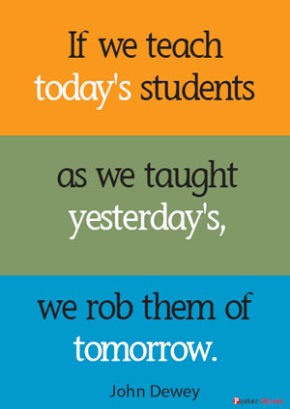The American education system is failing its students. Over the past twenty years, the U.S. has declined in world education comparisons. Whether it is the American system declining, or the rest of the world catching up is not for debate. One thing is clear: education in America needs change. Students want change.
Learners sitting in classrooms across the U.S. are bored. They are tired of hearing the teacher “preach” from their soapbox while they sit passively waiting for instruction to be done to them. Teachers continue to implement strategies designed for students to succeed in twentieth century schoolhouses when they need to develop twenty-first century skills. As Dewey states, “if we teach today’s students as we taught yesterday’s, we rob them of tomorrow.” If we continue to implement teacher-centered strategies, we will continue to fail our students, causing them to be ill-prepared for the world that awaits them upon graduation. I argue that educators need to shift to a 21st century learning model, which achieves three main goals:
-
Teachers need to transition to lesson facilitators or guides that implement student-centered pedagogy to foster the growth of students’ 21st century learning skills.
-
Teachers and learners must harness the available mobile technology.
-
Schools must redesign the learning space to more efficiently allow for this pedagogical approach.
The skills which educators and businesses deem most important in the 21st century are creativity, collaboration and innovation, critical thinking and communication. These skills need to be at the forefront of our nation’s curriculum and school redesign so that teachers, schools, districts and the nation alike are in line with the goal of best preparing our learners for success in jobs that we cannot foresee.
